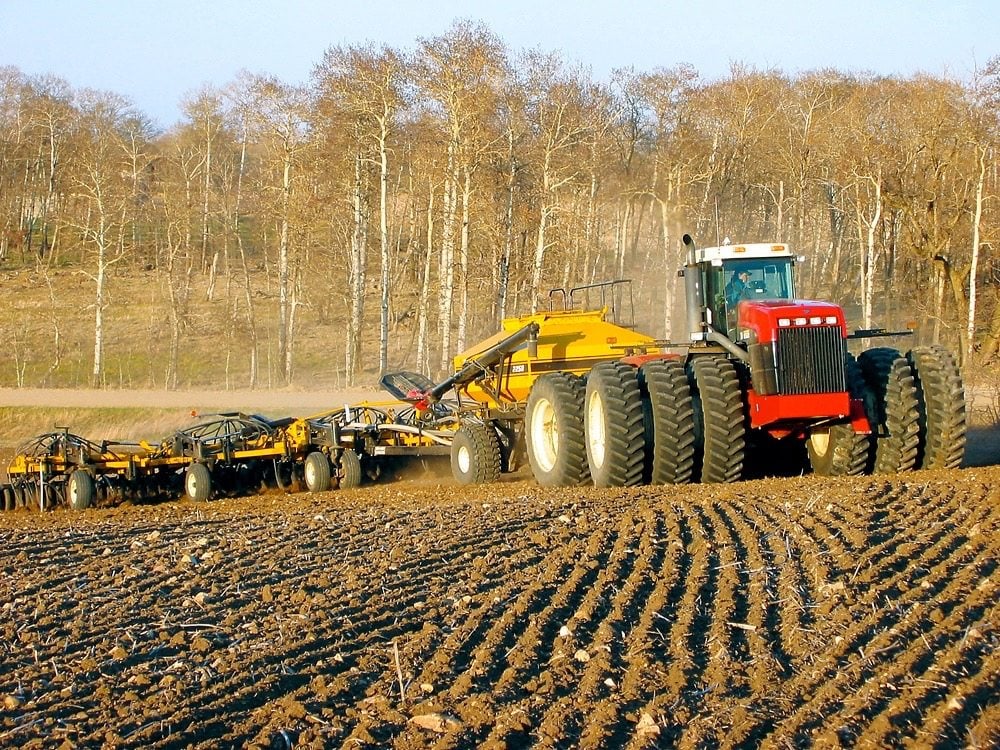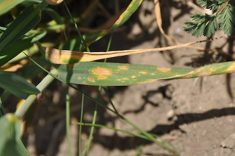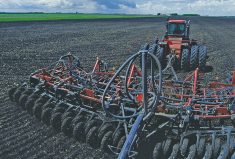What kind of wheat crop might you get if you seeded in February or March?
One that’s not half bad, if the preliminary results of a recent federal research study are any indication.
“How can you get a little more yield? Well, you can put it in the ground a little bit earlier,” said University of Alberta PhD candidate Graham Collier, who was involved with the study.
“If you look at seeding rate studies, most of the time the best yield comes from that earlier seeding date. And we have the opportunity to seed a lot earlier.”
Read Also

Farming Smarter receives financial boost from Alberta government for potato research
Farming Smarter near Lethbridge got a boost to its research equipment, thanks to the Alberta government’s increase in funding for research associations.
Collier’s research was birthed in a winter wheat-breeding program, which essentially created “spring-type winter wheats” by crossing Norstar — a popular winter wheat variety — with Bergen, a CPRS wheat variety. Several of the spring lines from that cross had better cold tolerance than some winter wheat varieties. So a team led by Ag Canada researcher Brian Beres decided to see how far they could push their seeding dates without sacrificing yield.
“We are going in early, and we are trying to stress these plants,” Collier said at the recent Cereals Innovation Symposium in Red Deer.
Of course, there’s an obvious potential downside.
“The risks are obvious — the loss of your crop stand early because of freezing. It’s going to cost you to go in and reseed again,” he said.
“But there are an awful lot of benefits, too.”
Water and weeds
And they aren’t limited strictly to potential yield increases.
Ultra-early seeding allows plants to capture early-season moisture and take advantage of a longer vegetative growth period. It would also give producers more time by enlarging both the seeding and harvest windows, improve weed competition, and reduce the risk of pest and disease infestations.
However, all that is moot if the crop freezes out.
“We have something here, but what we need to do is figure out how we can best use it in Western Canada,” said Collier. “We need to optimize the system.”
To that end, researchers seeded plots in Edmonton, Lethbridge, Swift Current, and Fort St. John based on “trigger temperatures” — 0, 2, 4, 6, 8, and 10 C — rather than seeding by date.
They monitored soil temperatures at the same time every day, and once the soil hit the trigger for the first time, the plot was seeded.

“Our goal with soil temperature triggers is to standardize the conditions when we’re seeding,” said Collier. “Though the time is going to be different every single year, hopefully the conditions will be the same.”
They were surprised how early they got into the fields.
“In Lethbridge in 2015, our first seeding date was March 6. In 2016, we seeded on Feb. 16 (although) 2016 was probably the earliest spring I can remember.”
Edmonton was a little later both years, but researchers were still able to seed super early — April 9 in 2015 and March 29 in 2016.
The typical recommended soil temperature for seeding spring wheat is no lower than 4 C, with 20 C being optimal. But yield wasn’t affected by the low seeding temperatures, even when the crop was planted into 0 C soil.
“By seeding ultra early, we didn’t cause a yield decrease,” said Collier. “Ultra-early seeding didn’t cost us any yield. It worked out all right.”
Next steps
And perhaps more surprisingly, AC Stettler — a spring wheat variety used as a check — performed just as well as the cold-tolerant wheats.
“We were a little caught off guard when Stettler did as well as it did. We expected there to be a benefit to those cold-tolerant genetics.
“The fact that there isn’t makes this system a lot easier for us to switch to. If we don’t have to have a specialized variety to do this, we’re on the road already.”
But there is still plenty of work to do before producers start rolling out ultra-early seeding on their own operations.
“We can go and seed early, but that’s not a huge help unless we know what the heck we need to do to be successful,” said Collier, cautioning the results from this research are very preliminary.
“We have our proof of concept done. But what we want to build is seeding rate and depth recommendations, weed management strategies, nitrogen source and timing recommendations, and a selection tool so we can start using current varieties in this system.
“Hopefully there’s something to this and we can come up with a recommendation strategy from it.”
Collier expects that a full management package should be available by 2020, and in the meantime, farmers can begin planning for the day when they’re seeding their wheat on a frosty February morning.
“You’d probably be pretty nervous going out and seeding on Feb. 16 — I’m not going to suggest that anyone go out and do that at this point,” said Collier. “And I’m definitely not going to suggest that everyone should put all their wheat production in, in the first week of March.
“But if you start picking fields on your farm that are conducive to getting in early, you can start to try it in the near future.”















